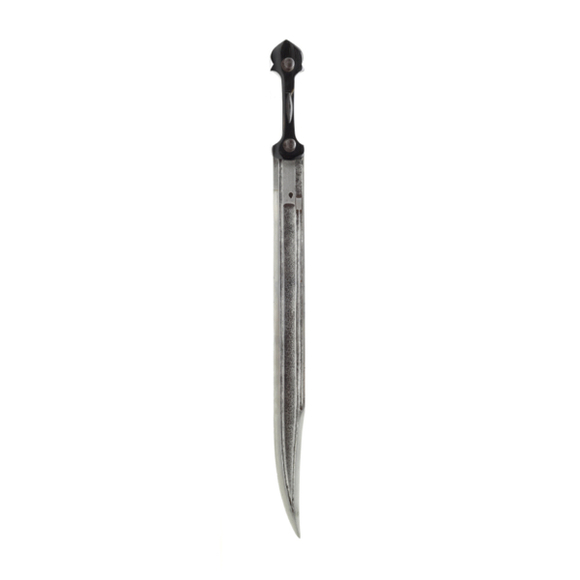Fine German hunting flintlock with captured Ottoman barrel.

Introduction
Like most Asian cultures, the Ottoman archers relied on a composite bow. It was made of horn and sinew glued on a wooden, C-shaped core. To string the bow, it bends in the opposite direction. The composite construction makes a bow with a relatively low physical weight that is capable of storing more energy than a wooden bow can. Composite bows come in many shapes and sizes, the Ottoman variation of this bow is built for maximum arrow velocity, they are among the fastest of composite bows.
Ottoman archery was among the most sophisticated of archery traditions, and Ottoman bows are hailed by many as the best bows ever made. They are well known for their records in flight archery, a discipline where the archer tried to shoot the longest possible distance. Flight archery became the most popular sport of Istanbul's elite, practiced vigorously by many Sultans and princes. The Ottomans perfected this form of archery, their records remain unbeaten until today. The furthest shot on record is of Iskender the “Tozkoparan” who shot 846 meters in the year 1550. As usual with these records, a stele was erected where his arrow landed. It is still in Istanbul today.
Shooting such a record took considerable skill from the archer, fletcher, and bowyer. The archer had to perfect his aim and release to the extreme, as flight shooting is very unforgiving and the slightest error can reduce the length of the shot. Fletchers made special, aerodynamic arrows that were specifically balanced for the long shot. Bowyers made special, dedicated flight bows whose design was all about performance with deeply reflexed working limbs. The lighter the limbs, the faster the arrow can go so Ottoman flight bows were generally not decorated. The bows were cured in heat boxes up to 48 hours prior to the record attempt, in order to drive all the moist out and to make them even lighter, and as stiff as possible.
Among collectors of composite bows, Ottoman bows are among the rarest and most sought-after bows.
This example
An Ottoman bow of excellent quality and condition. The bellies of rare black buffalo horn turning to amber near the tips. The back covered with very thin leather, painted in green and copper, decorated with golden details. The decor consists of classical archway shaped designs, blazing suns at the tips, crescent moons on the handle, and Ottoman rococo elements in two subtly different tones of gold on the middle of the working limbs.
Signatures
Only the very best bows were signed. What is interesting about this bow is that it’s signed not only by the bowyer, but also by its decorator, who was probably a man of some reputation. I am not aware of any other bow that bears both signatures.
The bowyer’s signature

"Amel-i haci gavsî 1240"
“Made by Haci Gavsî”, the year being 1824-25, depending in the month.
Haci is a title used by those who went to Mecca during one of two special periods; The ultimate goal of every Muslim. This title is normally followed by a person’s name, but in this case it may be a nickname: "kavs" or "gavs" is the Arabic word for “bow”. It might translate as “The Pilgrim Bowyer”. We've not yet been able to find records of a bowyer that went by this name, possibly because he is only known by his official name and not the nickname. It probably made more sense in Istanbul's elite archery circles of the time.
The decorator's signature

"Nakş-i mücellid Tevfik 1283"
"Nakş-i mücellid" is his profession: The leather binder and decorator of books, a very well-established art in the Ottoman empire. The year corresponds to 1866-67, depending on the month. It is curious that the bow was decorated 43 years after it was made. Also, the bowyer's signature is clearly in a different handwriting than the decorator. It suggests he himself re-signed the bow, 42 years after he made it.
As for the decorator: Tevfik is a rather common name, and several calligraphers went by this name so it’s hard to find out which one it was. I have found the cover of a book that shows some striking similarities to the work of this bow, that was done by a certain Mehmed Tevfik, signed 1910. Because it is another 43 years after the bow decor was done, it's not very likely that it is the same man. I attach the photo anyway, just for reference. Note the rococo elements in each corner, also done in two tones of gold.
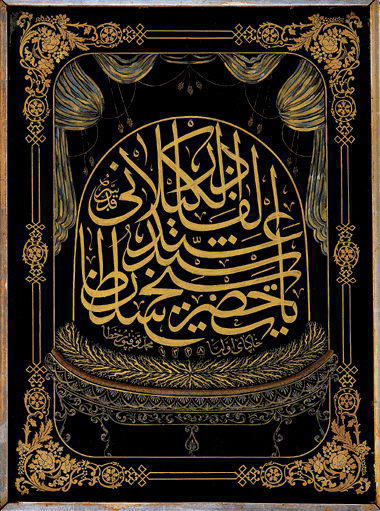
Source: The Journal of Ottoman Calligraphy
A decorated flight bow?
Ottoman bows came in two main types, the boat and the moon type, this being the moon type. Moon type bows are high-performance bows: delicate and highly efficient, but less stable so they require considerable skill from their archer and need to be handled with more care than the general target or war bows. They were usually used for flight shooting.
The bow in question was perhaps a flight bow that after many years of service, got “retired” as a target bow and subsequently decorated by Tevfik. Stress fractures in the covers do suggest the bow remained in use after being decorated.
Some historical background
This particular bow was made under the rule of Mahmut II, who was an avid flight archer with some impressive records to his own name, exceeding 800 meters where the current world record with similar equipment is in the 500’s. During his tenure, he went to great lengths to revitalize the sport, and he ordered Mustafa Kani Efendi to write the immensely important book on Ottoman archery called Telhis-i Retail-Ü’r Rumât. It was translated to German by Joachim Hein, whose translation, in turn, formed the basis of Dr. Paul E. Klopsteg’s work: "Turkish Archery and the Composite Bow”.
Conclusion
A very fine antique Ottoman bow, made under the rule of Sultan Mahmut II, who himself was a very respectable archer. Only the best bows were signed, and this is the only bow I have come across that was signed and dated by both the bowyer and the decorator. Ottoman bows are extremely rare on the market, this being a unique example of excellent quality and condition.
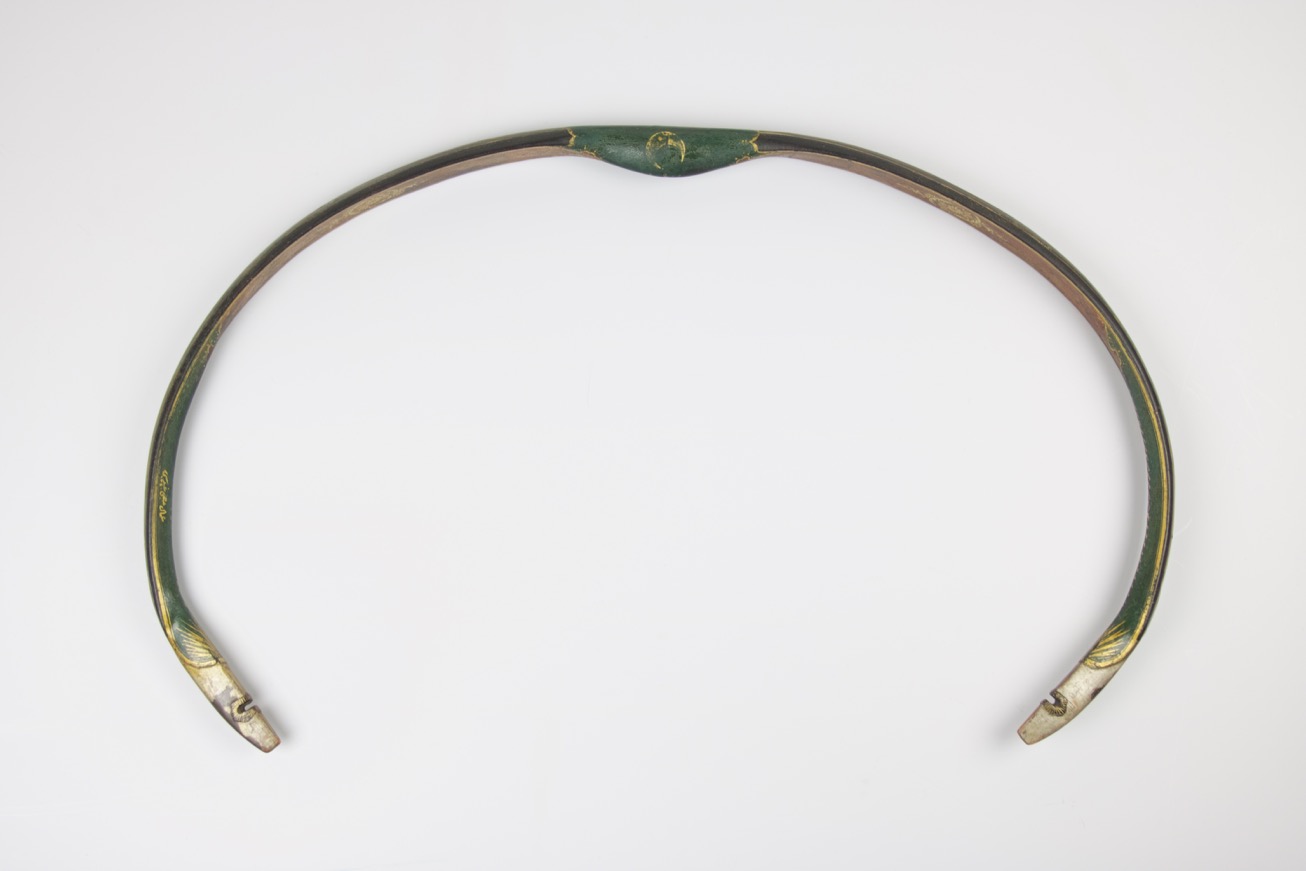





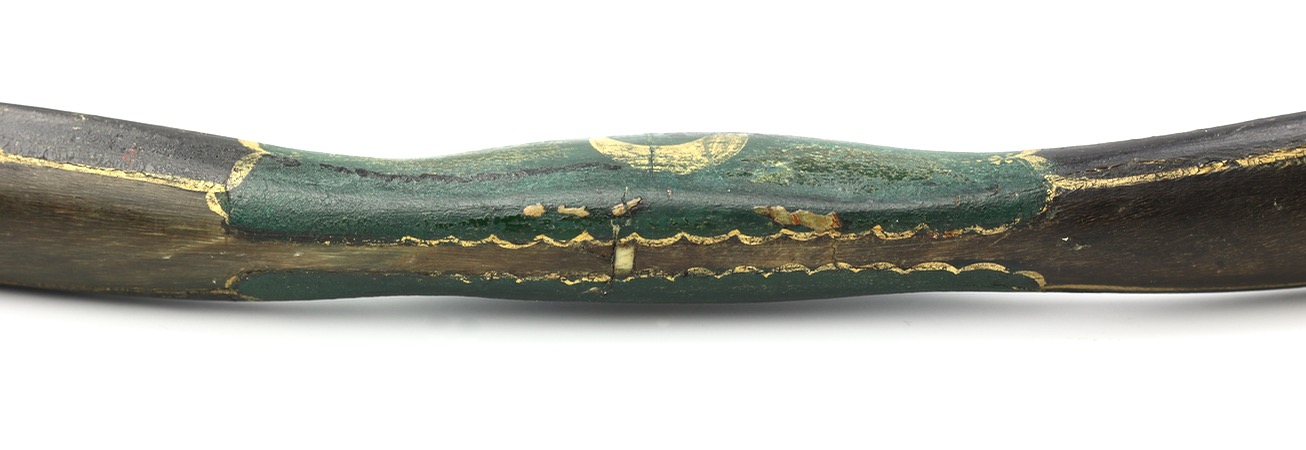
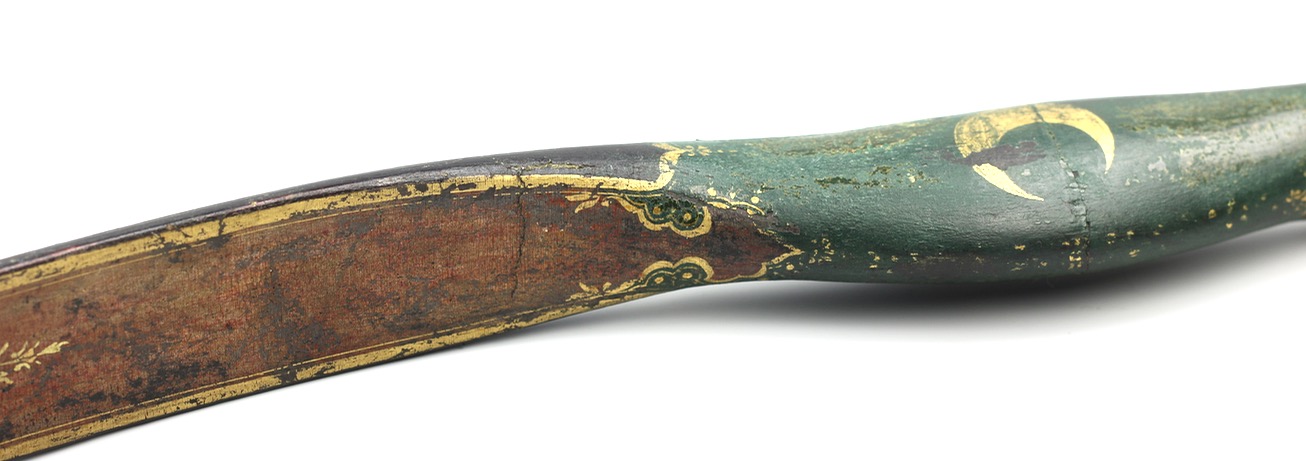
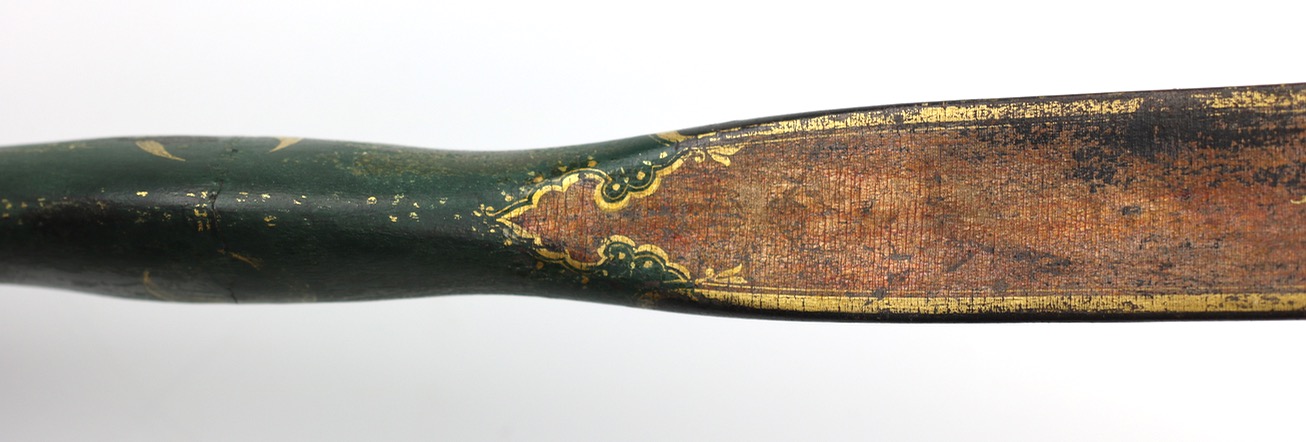

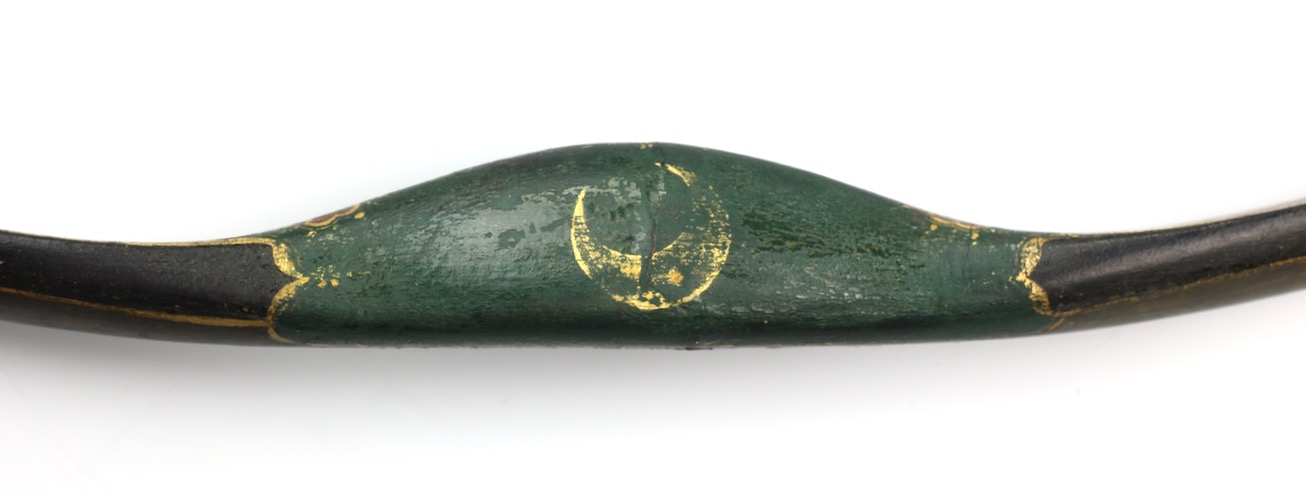



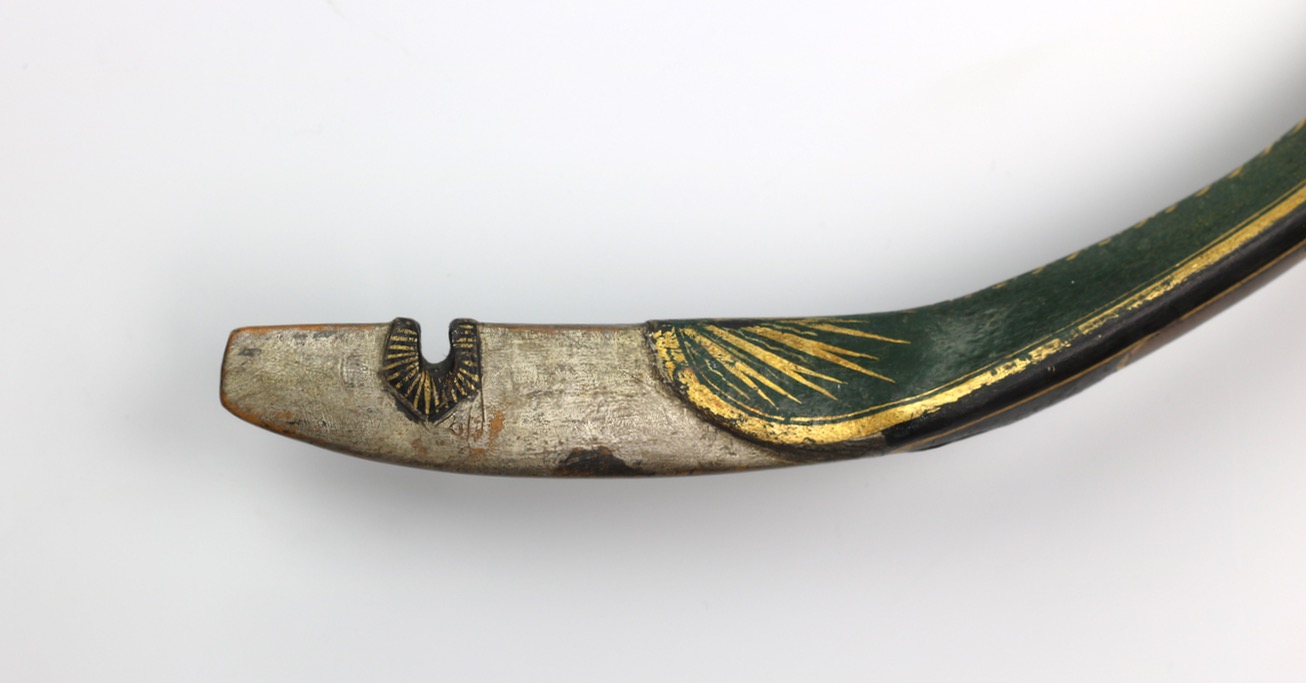



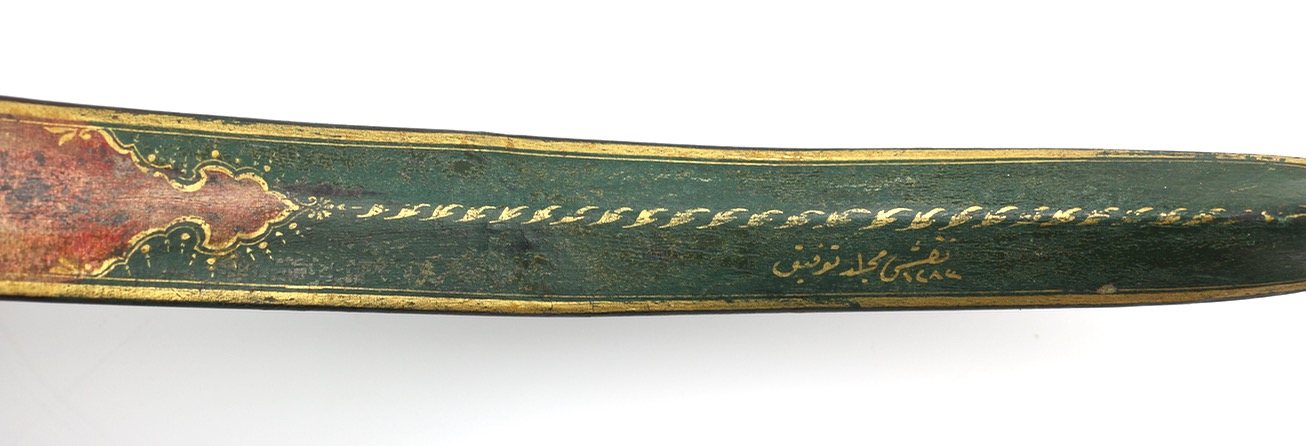

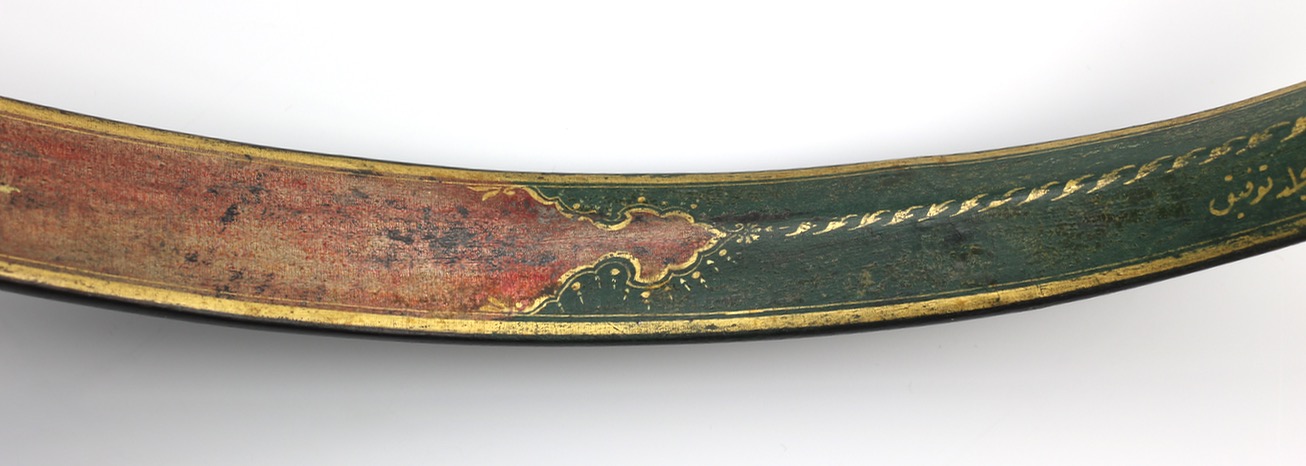





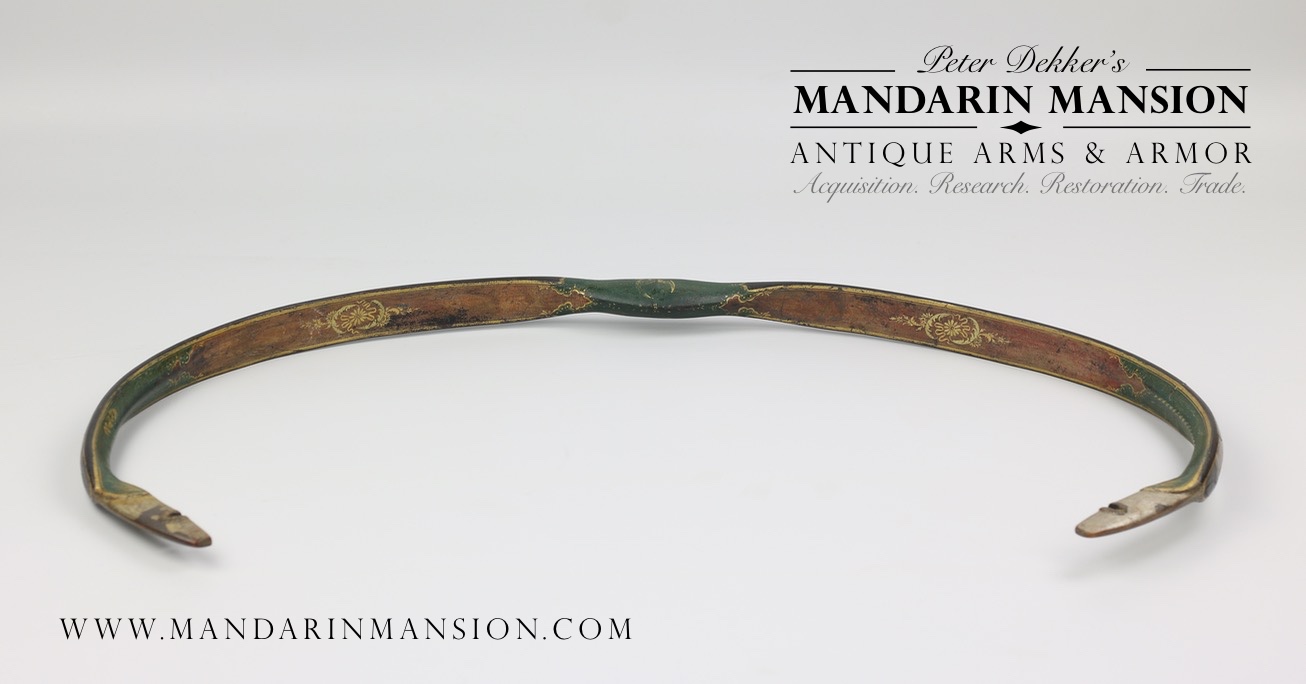
With a very fine Nepalese blade, but kard-like hilt and scabbard.
Early type with very shallow notch in the blade and little flare in the pommel.


